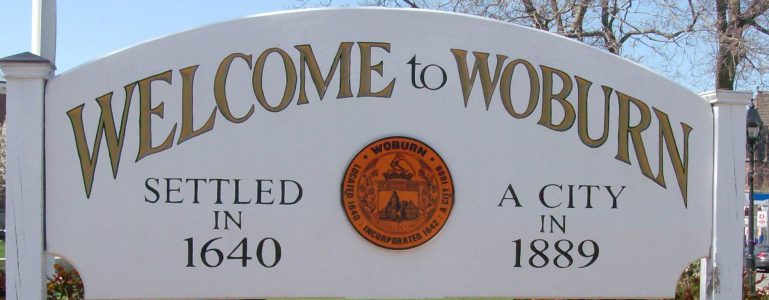Founding of Woburn
Nine years after the Pilgrims founded Plymouth Colony in 1620, Puritans from England settled in Charlestown and established the First Church of Charlestown. As more families migrated from England, the Church needed to expand their territory to provide additional land for farming to accommodate their growing congregation. After petitioning the Great and General Court of the Massachusetts Bay Colony, the Church was awarded a large tract of land to the North encompassing an area including present day Winchester, Burlington and Woburn and parts of Stoneham, Reading and Wilmington. The Court stipulated that the new settlement would be named Charlestown Village and be maintained as a civil and religious society. The leaders were required to build houses, lay out streets and build a church within two years.
In November of 1640, seven members of the Church were commissioned to explore this vast territory and find a suitable site for the new town. Led by Captain Edward Johnson, Thomas Richardson, Samuel Richardson, Ezekiel Richardson, Thomas Graves, Edward Converse and John Mousall set out into the wilderness. Edward Johnson was an established leader of the Charlestown community and well known throughout the colony. Published in England in 1654, Johnson was the author of The Wonderworking Providence of Zion’s Saviour in New England, the first printed history of New England.
By 1642, the town of Woburn was incorporated by an act of the General Court making it the twentieth town in the Massachusetts Bay Colony. Also in 1642, the First Parish/meetinghouse was built, the first roads were established, and the First Burial Ground was laid out. It is listed on the National Register of Historic Places.

Ancient map of Massachusetts Bay, 1667

Captain Edward Johnson went into the wilderness along with six other brave men and settled Woburn in 1640.

Aberginian, a term used by early settlers for the tribes of the north. One of these tribes in the Horn Pond area were the Abenaki, “people of the dawn.”

The First Meetinghouse (church) located on what is now the Woburn Common.












 going
going